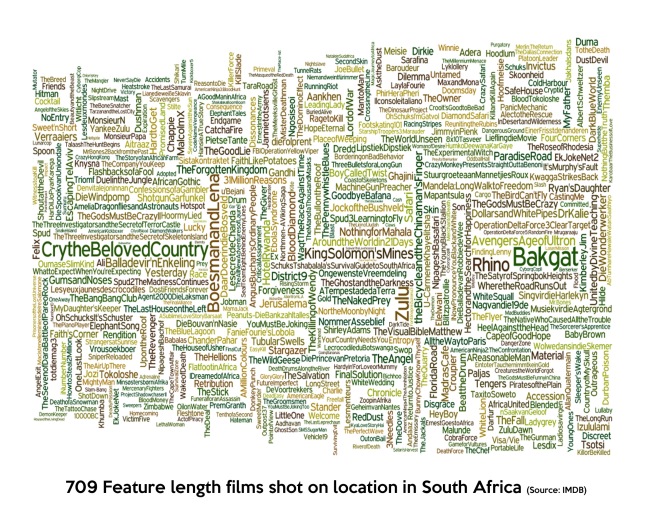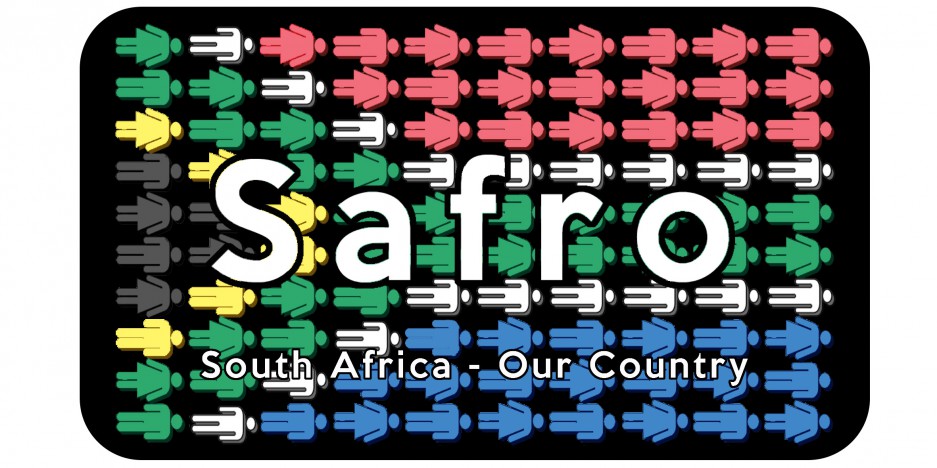SAFRO HAS MOVED TO A NEW HOME AT WWW.SAFRO.INFO
CLICK HERE FOR MORE INTERESTING ARTICLES AND INFOGRAPHICS ABOUT SOUTH AFRICA
24 April 2015 – The South African release date for Avengers: Age of Ultron, another epic superhero blockbuster delivering a wantonly destructive romp through numerous international destinations, this time including downtown Johannesburg. The latest Iron Man and company outing includes a 20 minute scene featuring (yet another) gratingly accented South African – Hollywood rarely seems able to get it right – and a shocking disregard for private property in the Joburg CBD, the owners of which are certainly kicking themselves for not staying up to date on their “collateral damage resultant from an over-exuberant altercation between hulking green beast with surprisingly elastic purple pants and 3 meter tall metal-machine-man” insurance payments. The inevitable carnage was filmed over a period of 3 weeks in Egoli, thereby adding A:AoU to the lengthy list of feature length films that were shot, at least partially, on location in South Africa.
According to the Internet Movie DataBase (IMDB) Age of Ultron is the 709th feature film released that sports our beautiful bundu’s as backdrop*. Although South Africa has a history with the bioscope that dates back to 1895, the very first movies shot on location in SA were De Voortrekkers and a Zulu’s devotion, and both these films were only released in 1916 by the newly established African Film Productions, thus marking 2016 as a celebratory occasion for a century of Mzanzi in the movies.
Besides the numerous international movies that would merely exploit our wonderful weather, beautiful backdrops and low-priced labour, South Africa’s own movie making history is filled with cinematic classics such as King Solomon’s Mines (1937), Cry, The Beloved Country (1951), Zulu (1964), Boesman En Lena (1973), The Gods Must Be Crazy (1980), Jock Of The Bushveld (1986), and Oh Schuck’s… it’s Schuster (1989). The contemporary post-apartheid film industry would also deliver a bevy of cult hits including Lipstick Dipstick (1994), Paljas (1998), Stander (2003), U-Carmen eKhayelitsha (2005), Tsotsi (2005), Bakgat (2008), District 9 (2009) and of course Neill Blomkamp’s latest hour and half long misjudged marketing vehicle for Die Antwoord – Chappie (2015).

Of all the movies that were at least partially shot on our shimmering shores, the top three are, according to user ratings from IMDB, the new Avengers: Age of Ultron (2015)(9.2/10), the latest darling in the revival of Afrikaans cinema, Ballade Vir n Enkeling (2015)(8.8/10), and tied for third place are the equally obscure (at least to me) but intriguingly named The Angel, The Bicycle And The Chinaman’s Finger (1992)(8.3/10) and Dr. Kalie (1968)(8.3/10).
Of course no movie history is complete without a few duds, and where Hollywood tries its best to deny the existence of Battlefield Earth and Gigli, so too are there a few movies captured on film in SA that are best relegated to the very back of the collective human consciousness . The first of these is the forgettable Space Mutiny (1988)(2/10), the worst part of an already terrible 4 Sci-Fi film Collectors Set quartet, that according to reviewers is an “hilariously bad sci-fi epic that’s guaranteed to have you in stitches”, not surprising as one of the most memorable lines in the movie is the trite, yet strangely chuckle inducing, “Take that, you space bitch!”. Secondly we have the Outlaw of Gor (1988)(1.9/10), affectionately referred to by absolutely no one as Gor II. The lack of any kind of attention to detail or nuance in producing this title is evident not only in the description of the movie, “[a]n Earthman returns to the planet Gor, and fights against tyranny”, but also in the fact that the main character’s name “Cabot” is spoken more than 55 times in the first 10 minutes of the movie. The final movie, the title that holds the distinctive honour of being the worst movie ever to showcase South African scenery, is Chatur Singh Two Star (2011)(1.7/10). As much as I would attempt wit in describing this Bollywood abomination, I have to acknowledge, as any respectable author should, when I have already been bested by another. One that is able to so succinctly express, in no more than 34 words, the emotions that this movie evokes that any additional words would be entirely superfluous. For this I respectfully concede to the following review of Chatur Singh Two Star by IMDB user Vivart Pandey: “I have no doubt about comic talent in sanjay dutt. but I can say that these have no clues about what is comedy movie. Don’t see this movie there is nothing in this movie”. ….brilliant.
 So remember that 2016 marks a century of South Africa in the cinema and some the most memorable, and the most terrible, movies to ever grace our silver screens. Go revisit an old SA classic or, if you feel charitable, go rent Chatur Singh Two Star and effectively double the income that the producers of that disgrace will ever receive.
So remember that 2016 marks a century of South Africa in the cinema and some the most memorable, and the most terrible, movies to ever grace our silver screens. Go revisit an old SA classic or, if you feel charitable, go rent Chatur Singh Two Star and effectively double the income that the producers of that disgrace will ever receive.
*I know it says 732, but 23 of those films have not yet been released.




